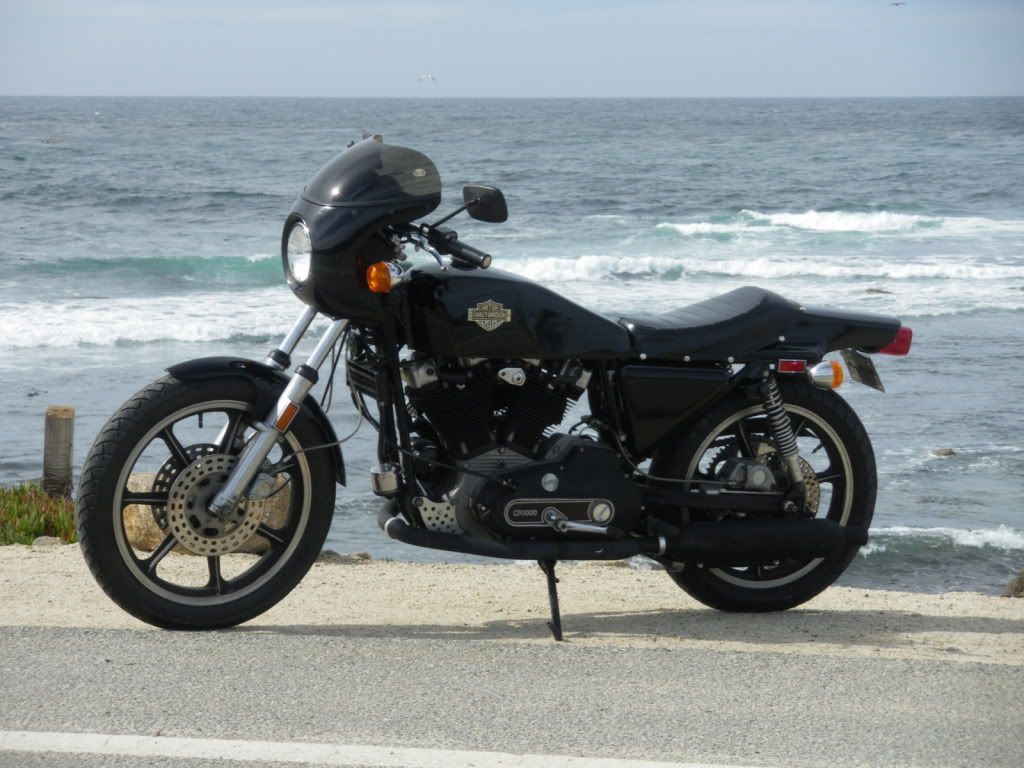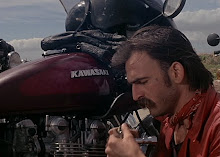This time last year I was happily hauling home a rusted hulk that was, at one time, a 1965 Ducati 350 Sebring. I drove home that evening with the image of me putting on an old-school helmet, tromping on the kick start and then tearing off into the horizon to the tune of a thousand fluttering female hearts.
One year later I have a painted frame, a few other bits with paint on them and an engine spread all over the basement. With coffee mug in hand, I examine my pile of parts each morning and ask “where the hell does all this stuff go?”
So, with optimistic restorations in mind, I present The Six Things They Don’t Tell You about Motorcycle Restorations.
1. The cost
Sure, the bike was cheap. I only paid $150 for my Ducati. Parts, however, are not. $100 here, $50 there, $75 over here and soon you’re $1,000 in the hole on your $150 bike. Be careful how you spend because it adds up faster than you think, even if you think really fast.
Shipping cost is another area that you don’t often think about. When you’re stoked about getting that ϋber-rare part at a nice price, don’t forget to look and make sure you aren’t getting shafted on the shipping. I bought a new-old stock piston for my Ducati that cost $200. While that made my butt cheeks clench, the shipping threw me into spastic fit. It cost $14 to ship the piston from Cincinnati, OH to my home in Pittsburgh, PA, a distance of 300 miles. I bought a part from England of similar weight and it cost me $12 to ship it to my door. Yeah, I don’t get it either.
2. Finding parts
If I had purchased a rusty British bike or American bike, I would be up to my ears in restoration parts. No, I had to buy an obscure Italian bike that wasn’t very popular in the U.S. and one that doesn’t have great parts support. All I have to say is: thank God for the Internet.
While the Internet was originally designed by nerds for easy access to porn, it also doubles as an efficient and easy way to buy old motorcycle parts. Thanks to countless EBay sellers across America and from stores in England, Australia and Italy, I have been able to get parts relatively painlessly. I also have to give mad props (does anyone still say that?) to the Ducati guy that sells stuff at Vintage Motorcycle Days at Mid-Ohio every year. You’ve been a life saver. *does chest thump point thing*
3. Surprises
One usually goes into a restoration thinking “a few cans of paint, some metal polish and a bottle of Lucas Oil Treatment and I’ll be done in time for bike night.”
No, you won’t.
No, you’ll find that rust has eaten pits into your frame, the brakes are frozen in place and the seat is home to a colony of rare spiders that PETA won’t let you disturb. You’ll also take the cylinder head off to see why your engine won’t turn only to find a nickel-sized hole in the piston, the same piston that is seized to the bore.
I’m speaking from experience, here, folks. The things you’ll find tearing into an old motorcycle will shock you more than finding out your parents smoked pot (which they did).
4. The work
A lot of people glamorize the restoration process but it’s not glamorous at all. It’s really messy and dirty. You will swear, you will break stuff and you'll have to improvise. It does, however, teach you to think and how to deal with unpleasant situations. You can apply the lesson you learn in your garage (or basement) to your life. Wrenchin' and learnin'. I should write a book.
Also, old parts are usually covered in old oil that smells awful and will stay on your hands until the end of time. I once asked an old-time mechanic how to get the oil off my hands. He said I should wash my hands with gasoline. I then asked him what I should wash my hands with to get the smell of gas off and he just looked at me like I was crazy. I’m crazy? You’re the one washing your hands in gas. I hope this guy doesn’t like to use a grill.
Anyway, once your motorcycle has been reduced to bits and your hands resemble those of an Egyptian mummy, it’s time to put everything together. You did remember to take pictures and mark where everything goes, right? Good, now bolt your mess back together. Don’t forget where that wavy washer goes, or which clutch plate goes in first, or where that spring went. The service manual sure isn’t going to tell you.
5. The tools
Having an old bike to restore is a good excuse to buy tools. But don’t think you’re going to get by with a cheap socket set from Sears. Most of my Ducati’s bolts used Allen heads, requiring me to buy Allen keys. Okay, drive to Sears and buy Allen key set. Wait, the fork caps are 12mm Allens and I don’t have that size in my set. Drive back to Sears and buy 12mm Allen key. Wait, the oil plug and the drain plug are 14mm Allens and I don’t have that size in my set. Drive to Sears again and buy 14mm Allen key.
But it doesn’t stop there. Disassembling the engine requires a whole slew of special tools that aren’t produced by Ducati anymore. You need tools to hold the cams, tools to help with timing, tools to remove the valve springs. The Internet can help you find new-production versions of those tools but be prepared to pay a lot for them and for their quality to be on the lower end.
6. Riding your restored bike
Um, I really don’t have much to say about this because I’m nowhere near that point. I imagine it’s very satisfying and I long for that day. Until then, though, I’m going to be down here in my basement trying to find the really small o-ring that went between the cylinder head and the piston barrel. I know it’s around here somewhere. Wait, where does this piece go? Hey, don’t shut the light out on me!





